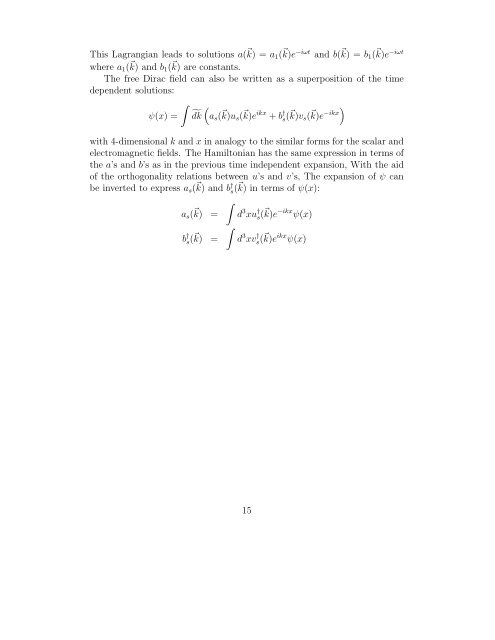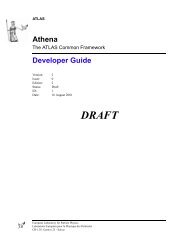0.1 Klein-Gordon Equation 0.2 Dirac Equation
0.1 Klein-Gordon Equation 0.2 Dirac Equation
0.1 Klein-Gordon Equation 0.2 Dirac Equation
Create successful ePaper yourself
Turn your PDF publications into a flip-book with our unique Google optimized e-Paper software.
This Lagrangian leads to solutions a( ⃗ k) = a 1 ( ⃗ k)e −iωt and b( ⃗ k) = b 1 ( ⃗ k)e −iωt<br />
where a 1 ( ⃗ k) and b 1 ( ⃗ k) are constants.<br />
The free <strong>Dirac</strong> field can also be written as a superposition of the time<br />
dependent solutions:<br />
∫<br />
ψ(x) =<br />
˜dk<br />
(a s ( ⃗ k)u s ( ⃗ k)e ikx + b † s (⃗ k)v s ( ⃗ )<br />
k)e −ikx<br />
with 4-dimensional k and x in analogy to the similar forms for the scalar and<br />
electromagnetic fields. The Hamiltonian has the same expression in terms of<br />
the a’s and b’s as in the previous time independent expansion, With the aid<br />
of the orthogonality relations between u’s and v’s, The expansion of ψ can<br />
be inverted to express a s ( ⃗ k) and b † s (⃗ k) in terms of ψ(x):<br />
∫<br />
a s ( ⃗ k) = d 3 xu † s( ⃗ k)e −ikx ψ(x)<br />
∫<br />
b † s (⃗ k) = d 3 xv s † (⃗ k)e ikx ψ(x)<br />
15
















